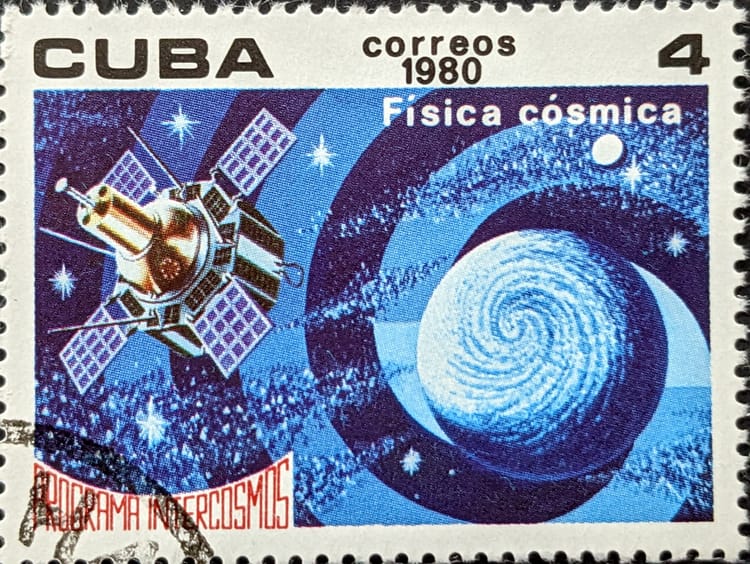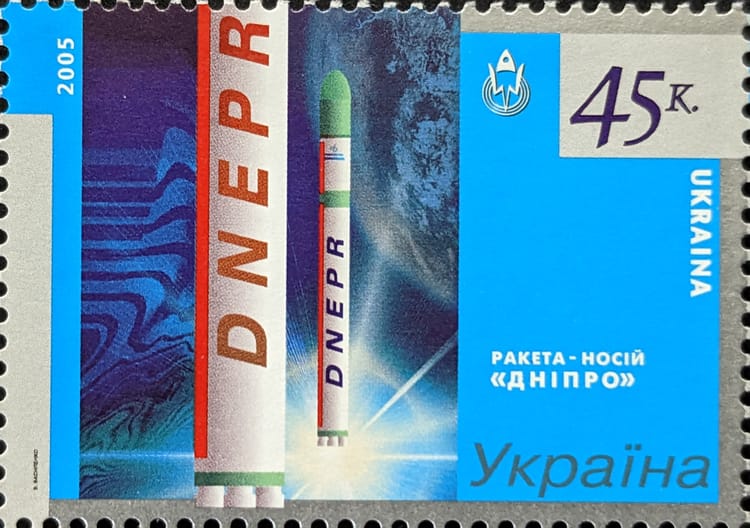From Modular & Flexible to “A Necessary Step”

Nearly two weeks ago a European Union (EU) Commissioner, Thierry Breton, mentioned the European Ariane 6 launch vehicle and its successor, the Ariane 7. He mentioned a desire to gain funds for the Ariane 7. And he noted the Ariane 6 was a necessary step to get to Ariane 7. Once the Ariane 7 became operational, he seemed to believe it would level the playing field between Arianespace’s offerings and SpaceX:
“SpaceX has redefined the standards for launchers, so Ariane 6 is a necessary step, but not the ultimate aim: we must start thinking now about Ariane 7,” Breton said.
To be clear, no version of the Ariane 6 has launched yet.
Established Pedigree with Configuration Challenges
Europe relies on three different launch vehicle families for getting objects into space: Soyuz, Vega, and Ariane 5. All three launch out of Europe’s only orbital spaceport in Kourou, French Guiana, and all launch operations there are conducted by France’s Arianespace. Ariane 5 is the launch vehicle that is due to be replaced by Ariane 6, phasing out by 2023.
The Ariane 5 is Europe’s most capable and reliable launch vehicle, first launched 24 years ago in 1996 (the initial launch was a failure). Since then (and as of this writing), different versions of the Ariane 5 have launched 109 times and it hasn’t experienced any more failures since 2002. It is considered to be Europe’s “heavy” launch vehicle, able to lift 20 metric tons to low Earth orbit (LEO), and 10 metric tons to geosynchronous transfer orbit (GTO).
Ariane 5 attracted commercial customers, primarily those operating telecommunications satellites in geosynchronous orbit. For a time, it was considered the only launch vehicle “commercially available” with which those operators could launch their satellites. However, the Ariane 5 had at least two challenges: its price and very limited launch deployment capability.
As happens with most business endeavors that become successful without any competitors (at the time), increased demand for a product/service led to increased prices for those products/services. Launch prices approached United Launch Alliance (ULA) territory, reaching as high as (according to Arianespace’s CEO) $200 million per launch at times. But Arianespace argued that the price could be split since the Ariane 5 had the ability to deploy two satellites using its SYLDA (SYstème de Lancement Double Ariane) mount/deployer (page 5-5). There are six types of SYLDA the Ariane 5 can use for dual-satellite duty.
SYLDA served as a mount for a larger satellite on its top and as a protective structure containing a second, smaller, satellite. This meant that, yes, the Ariane 5 could lift two satellites to GTO. But it also meant that the one mounted within the SYLDA had to be smaller than the one mounted on top of the SYLDA. If Arianespace couldn’t find a customer with a satellite to fit with the SYLDA configuration somehow, then a single customer would be bearing most of the launch cost (mitigated some using subsidies).
A question during a 2015 Spaceflightnow.com interview with Arianespace’s CEO, Stephane Israel, highlighted this challenge:
Q: You have two Ariane 5 launches to begin 2016, both with single passengers for Intelsat and Eutelsat. Was it difficult finding co-passengers for those two satellites? Why launch a single payload, versus your normal dual-payload missions?
A: It’s a matter of fact that we had two customers who did not want to suffer any delays — Intelsat and Eutelsat. Intelsat because having their Epic satellite in orbit as soon as possible is very important for their business case and for their customers. Eutelsat wanted to be launched before the Olympics. From time to time, customers do not place the same level of priority on schedule, but for them, it was a top priority to be launched as early as possible. We have been fully transparent with them. I want to highlight that because it’s not so common in our business. I think it is a comparative advantage when you come to Arianespace, you have transparency.
We have told customers that even though we have managed to rebalance our order book between small and big satellites — an effort that we’ve successfully made over the last two years — we could have a near term discrepancy between the availability of the big and the availability of the small. Some big satellites being available right at the beginning of the year, and other smaller ones more at the end of the first half of 2016. We explained the situation very clearly to our customers at the beginning of 2015. We have kept the conversation going with our customers, and we sketched out different scenarios. At the end of the day, they both decided to go for this single-launch solution on Ariane 5. The launch opportunities were available in early 2016 and we were able to accommodate their satellites. Last but not least, in our contractual relationship with our prime — Airbus Safran Launchers — it was a way to secure the Ariane 5 launch cadence in 2016 and to avoid some extra costs that would have been incurred if we had begun Ariane 5 launches later on.
The Ariane 5 can launch more than two satellites at a time, but it takes a little extra work. It was used to launch four Galileo satellites at a time, using a customized deployment system. An essentially government-sponsored launch with access to government money likely helped with developing the customized deployment system. But, as Israel noted, customers who want to deploy their satellites quickly to GTO using the Ariane 5 will pay a premium to do so--and Arianespace was in a position to command that premium.
Aiming At Where the Target Was
These challenges eventually became an exploitable Achilles heel. While Arianespace didn’t appear too worried about ULA as a competitor and was co-opting Russia’s Soyuz for its business, SpaceX began snaring satellite telecommunications customers with significantly lower launch prices for its Falcon 9. The company’s launch prices were/are typically less than half what Arianespace was/is charging customers for the Ariane 5 and the Falcon 9 proved to be extremely capable. The European response to SpaceX’s success was to approve Ariane 5’s successor in 2012, Ariane 6. The first Ariane 6 launch was supposed to occur in 2020.
Ariane 6 was not intended as a ground-breaking launch system but appeared to be more of a standoff system developed to compete (somewhat) with SpaceX’s Falcon 9. In a 2013 European Space Agency (ESA) announcement, the agency highlighted these expectations for the Ariane 6:
The objective of Ariane 6 is to maintain guaranteed autonomous access to space for Europe, while minimising exploitation costs and suppressing any support to exploitation.
In other words, Ariane 6 is supposed to ensure Europe still has its own launch vehicle, one that is cheaper to manufacture and launch than the Ariane 5. Israel emphasized those desirable traits during that same Spaceflightnow.com interview: the Ariane 6 would provide equivalent performance to the Ariane 5 ECA, with a 57% higher annual launch cadence (11 launches vs. Ariane 5’s seven), for 40/50% less than Ariane 5 launch costs. It would be more modular and flexible than Ariane 5.
While other systems have been floated, the EU has stayed committed to Ariane 6 throughout the years. At least until Breton’s comments during his interview a few weeks ago. How does Ariane 6 go from competitive, modular, and flexible to becoming just a necessary step to Ariane 7? Why even mention Ariane 7 when Ariane 6 hasn’t launched yet?
Ariane 6, in spite of all the optimistic descriptions to the contrary, is outperformed by SpaceX’s Falcon 9 in actual performance--including launch cadence--the F9 has launched successfully 11 times in 2020 so far (that’s the annual goal for Ariane 6). The F9 beats it on reliability (we just don’t know how reliable the Ariane 6 will be since it hasn’t launched yet). SpaceX beats Ariane 6 on flexibility, offering smaller satellite operators frequent opportunities for deployments. SpaceX also beats Ariane 6 on launch costs, offering all satellite operators launches at lower costs unimagined not too long ago ($1 million for launching 200 kg?).
Marketing Challenge
These all contribute to difficulties in drumming up business for the Ariane 6, in spite of many, many years of attempting to do so. Ariane 6 has been a hard sell, especially to commercial companies. Its reliability is unknown but it will cost more to use than systems from other nations. So far and less than a year from its first launch, just two commercial companies have considered working with the Ariane 6: OneWeb and Eutelsat.
OneWeb has the option to launch three loads of satellites on the Ariane 6, but given the protectionist tendencies coming from the United Kingdom (which now holds a significant stake in OneWeb), those options might well vanish. European patriotism likely moved Eutelsat to pay more than it needs to, or should when it ordered Ariane 6 launches for five of its communications satellites. But those orders are likely solid. All other orders so far amount to a total of three, all for government missions. That’s a total of 8, possibly 11 Ariane 6 launches, which is not a good return on investment at $100 million per launch.
Basically and without too much effort, ANYTHING the Europeans could start building now, knowing and studying its competition today, would be an improvement in the three areas the Ariane 6 was supposed to address: cost, flexibility, and performance (while being made and operated by Europeans). At least ArianeGroup shareholders should demand that. And that’s probably why Breton mentions Ariane 7, Ariane 6, and SpaceX in the same sentence.




Comments ()